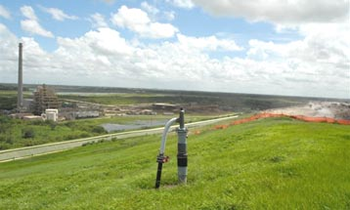 On November 10, Michigan Gov. Rick Snyder signed House Bill 4875 into law–a law that removes the double liner requirement on landfills if the landfill is used for “research and development projects.” The construction of bioreactors, such as at the Smiths Creek Landfill (St. Clair County), is one of the project’s being cited as a reason to remove the double-liner requirement, proponents say. Only a single-liner system will now be required for these sites.
On November 10, Michigan Gov. Rick Snyder signed House Bill 4875 into law–a law that removes the double liner requirement on landfills if the landfill is used for “research and development projects.” The construction of bioreactors, such as at the Smiths Creek Landfill (St. Clair County), is one of the project’s being cited as a reason to remove the double-liner requirement, proponents say. Only a single-liner system will now be required for these sites.
Bioreactor landfills reintroduce leachate (which has been further injected with water) into the waste to increase moisture levels and, thus, microbial activity and decomposition.
In Michigan, supporters of the new law feel that bioreactor landfills will shorten the necessary post-closure monitoring life, which would decrease long-term risk of a leak from the buried waste’s liner system. They produce more methane, and that methane can be harvested and converted into a revenue-generating source of power. Development of these systems, proponents contend, costs money that might not be spent if that money must be spent a required secondary liner.
Opponents site the re-introduction of leachate and injection of water as a heightened risk factor for leakage from the site, especially if the primary liner suffers any damage during installation of the liner itself or the extensive piping system necessary to manage gas and leachate generation. This, they note, is the exact reason a secondary liner is required. With the increased liquid activity in the landfill, greater environmental protections are needed.
The performance of the Smiths Creek Landfill and other single-liner bioreactor sites will be of great interest to waste management discussions going forward in Michigan.
Chris Kelsey is the editor of Geosynthetica.net.











